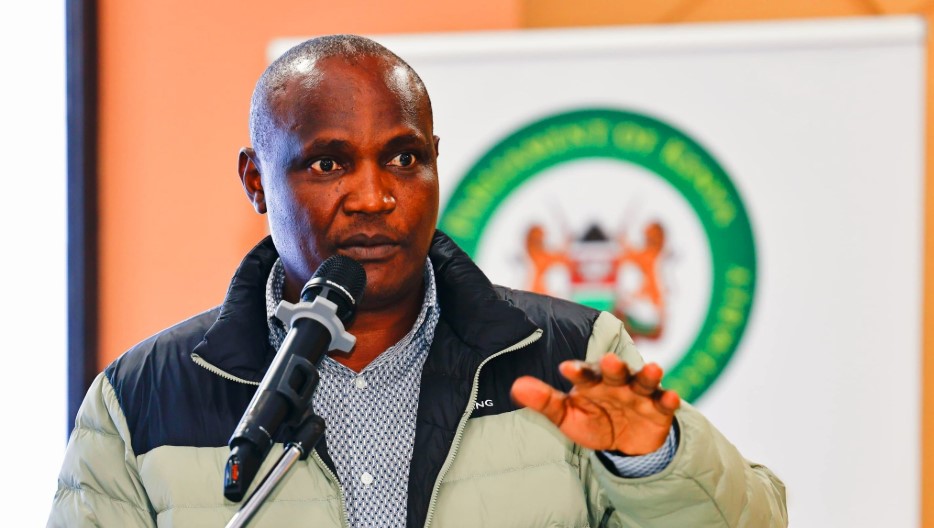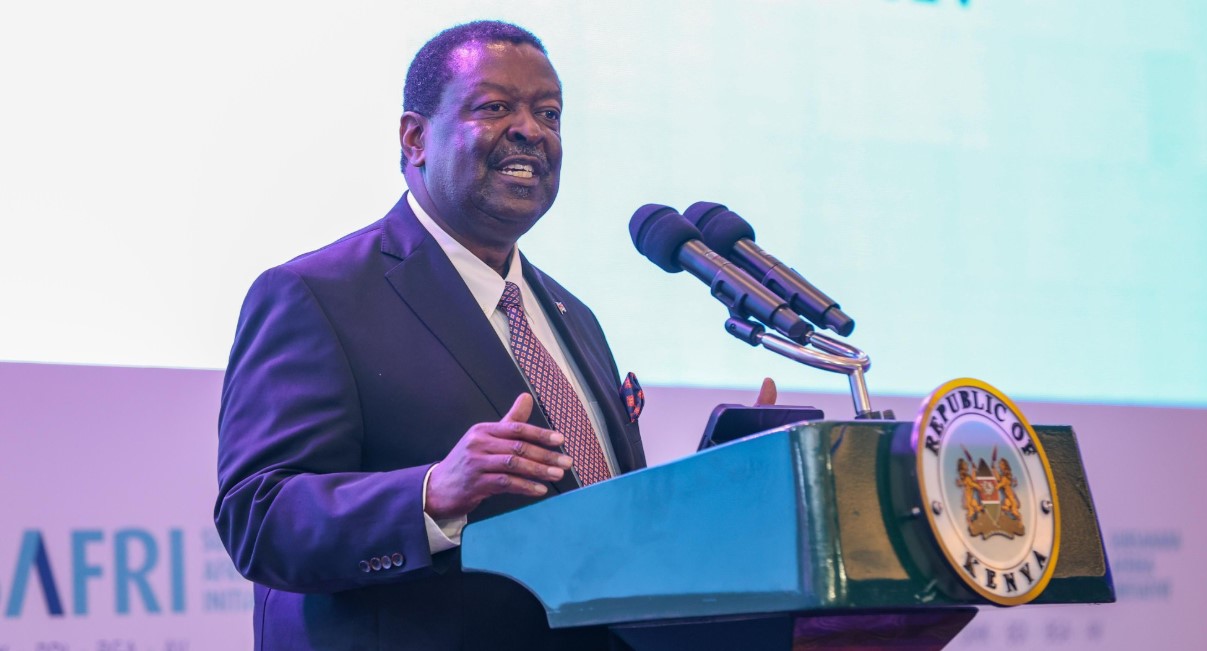Mpox outbreak: A wake-up call for Kenya's, Africa's healthcare infrastructure

Africa's reliance on foreign aid for healthcare and preparedness continues to weaken its ability to respond effectively to health crises.
The rise of communicable diseases like Mpox and Marburg has raised significant public health concerns across the globe, especially in Africa. As the continent faces these outbreaks, its healthcare systems are under increasing strain.
Africa's reliance on foreign aid for healthcare and preparedness continues to weaken its ability to respond effectively to health crises. For example, during the Mpox outbreak, African countries depended on wealthier nations for support.
More To Read
- MoH teams up with long distance truck drivers to fight Mpox, Marburg viruses
- Mpox vaccine not mandatory but a priority for high-risk groups, says Health ministry
- Kenya records two more cases of Mpox as state steps up response measures
- Kenya on high alert as cases of human metapneumovirus spreads globally
This dependency has negatively impacted healthcare infrastructure and the efforts needed to tackle
emerging threats in already vulnerable regions.
Since the start of 2024, DRC has reported over 4,901 confirmed mpox cases, with more than 629 associated deaths, representing a sharp escalation in both infections and fatalities compared to previous years.
The new Ib clade variant of the mpox virus, which has been confirmed in Kenya, is more severe and transmissible than previous strains. This variant has contributed to the heightened risk of community transmission
in the country, making it a critical concern for public health officials.
As of December 9, 2024, Kenya had reported 28 confirmed cases across 12 counties with one death recorded.
Nakuru remains the hardest-hit county, with a total of nine cases, followed by Mombasa with six. Other affected counties include Kajiado (2), Bungoma (2), Nairobi (2), and one case each in Taita Taveta, Busia, Kiambu, Makueni, Kericho, Uasin Gishu, and Kilifi.
The Democratic Republic of Congo (DRC) experienced a much higher toll from mpox this year, with children making up 70% of the deaths. The situation in the DRC was exacerbated by delayed vaccine distribution and overwhelmed health systems, putting many lives at risk.
In Kenya, low public awareness of the risk of mpox, combined with limited resources for a robust response, has made it more challenging to contain the outbreak. The country remains at high risk of further community transmission due to these ongoing challenges.
 A health official administers mpox vaccination to a man at a hospital in Goma, North Kivu province in the Democratic Republic of Congo on October 5, 2024. (Photo: File/REUTERS/Stringer)
A health official administers mpox vaccination to a man at a hospital in Goma, North Kivu province in the Democratic Republic of Congo on October 5, 2024. (Photo: File/REUTERS/Stringer)
Impact on Kenya and Africa
Mpox is a viral disease caused by the monkeypox virus, a member of the Orthopoxvirus genus, which also includes the variola (smallpox), cowpox, and vaccinia viruses. It was first identified in 1958 in monkeys used for research (hence the name), but the first human case was recorded in 1970 in the Democratic Republic of the Congo (DRC).
Though traditionally a rare zoonotic disease, the global health landscape was shaken by the 2022 outbreak, marking a significant rise in cases, particularly in non-endemic countries.
Symptoms
Initial symptoms resemble flu-like conditions, including fever, headache, muscle aches, and fatigue.
A distinctive rash, often beginning on the face and spreading to other body parts, typically follows.
Lesions can develop in various stages, including macules, papules, vesicles, pustules, and scabs.
Transmission:
Animal-to-Human: Mainly through direct contact with infected animals, particularly rodents and primates.
Human-to-Human: Via respiratory droplets or direct contact with bodily fluids or lesions.
Sexual Transmission: Mpox can spread through close physical contact, including sexual activities, and has been linked to the 2022 outbreak's spread.
Incubation Period: Generally, 6-13 days, but can range from 5-21 days.
Global Spread: Mpox had been primarily endemic to Central and West Africa, but the 2022 outbreak saw cases spreading globally, particularly to Europe, the Americas, and parts of Asia.
 The hands of a patient with skin rashes caused by the mpox virus are pictured at the treatment center of Vijana Hospital in Kinshasa, Democratic Republic of Congo August 30, 2024. (Photo: REUTERS/Justin Makangara)
The hands of a patient with skin rashes caused by the mpox virus are pictured at the treatment center of Vijana Hospital in Kinshasa, Democratic Republic of Congo August 30, 2024. (Photo: REUTERS/Justin Makangara)
Mpox, formerly known as monkeypox, is a viral zoonotic disease that has raised significant global health concerns, particularly with its outbreak in several regions including Africa.
Kenya, like many other countries in sub-Saharan Africa, has faced challenges in responding to the threat posed by Mpox, which has placed considerable strain on the healthcare system. The disease is characterized by fever, rash, and swollen lymph nodes, and in some cases, it can lead to more severe complications.
Mpox, caused by the monkeypox virus, is classified into two main clades based on geographic distribution and disease severity: Clade I and Clade II.
Clade I:
Geographic Distribution: Found primarily in the Congo Basin in Central Africa.
Mortality: This clade is more virulent and severe than Clade II, with a mortality rate of about 3%. This means that three out of every 100 people who contract the disease may die.
Symptoms: Infections from Clade I tend to result in more severe symptoms, including widespread skin rashes and a higher likelihood of complications.
Clade II:
Geographic Distribution: Endemic to West Africa.
Global Outbreak: Clade II was responsible for the global outbreak that began in 2022. Although it spread widely across various countries, it caused less severe illness than Clade I.
Mortality Rate: Clade II has a significantly lower mortality rate, with over 99.9% of infections resulting in survival. This indicates that most people infected with Clade II recover from the disease.
Kenya’s healthcare system strategies to address Mpox
Despite these challenges, Kenya has implemented several strategies to manage and mitigate the impact of Mpox. These strategies include:
 Health Cabinet Secretary Deborah Barasa flags off a lorry loaded with Mpox testing kits and NTD medications, marking a significant step in the fight against health challenges in the country. (Photo: MoH)
Health Cabinet Secretary Deborah Barasa flags off a lorry loaded with Mpox testing kits and NTD medications, marking a significant step in the fight against health challenges in the country. (Photo: MoH)Health Cabinet Secretary Deborah Barasa flags off a lorry loaded with Mpox testing kits and NTD medications, marking a significant step in the fight against health challenges in the country. Photo by MoH.
Strengthening Surveillance and Early Detection: Kenya's Ministry of Health, in collaboration with the World Health Organization (WHO) and other partners, has enhanced disease surveillance systems. This includes improving the reporting of suspected cases and ensuring that local healthcare facilities are equipped with the knowledge to identify
symptoms early. Surveillance has been critical in preventing widespread outbreaks.
Public Health Education and Awareness Campaigns: Recognizing the importance of public awareness, the Kenyan government has launched several educational initiatives to inform the public about Mpox. These campaigns focus on how the disease spreads, preventive measures, and the importance of seeking medical attention for early symptoms. Information dissemination is done through various media, including radio, television, and social media, to reach both urban and rural populations.
Collaboration with International Partners: Kenya's healthcare system has benefited from support from international organizations such as the WHO, Centers for Disease Control and Prevention (CDC), and Médecins Sans Frontières (MSF). This support has included technical assistance, funding for medical supplies, and training for healthcare workers. Collaborative efforts have also ensured that vaccines and treatments are
available to those at risk.
Improving Healthcare Infrastructure: The Kenyan government has committed to improving healthcare infrastructure, particularly in rural and underserved areas. This includes increasing the availability of medical supplies, improving hospital facilities, and upgrading diagnostic capabilities. By enhancing healthcare infrastructure, Kenya aims to ensure a more effective response to future outbreaks.
Strengthening Infection Prevention and Control: In response to Mpox, Kenya has focused on strengthening infection prevention and control (IPC) protocols in healthcare settings. This includes the use of personal protective equipment (PPE) for healthcare workers, proper isolation of suspected cases, and rigorous cleaning and disinfecting of
healthcare facilities to prevent cross-contamination.
Community Engagement and Empowerment: Local community leaders, traditional healers, and local health volunteers have been mobilized to help disseminate accurate information and prevent the spread of misinformation. Community-based health interventions have proven essential in controlling the spread of infectious diseases like Mpox, as they help build trust and encourage compliance with public health recommendations.
Top Stories Today



















